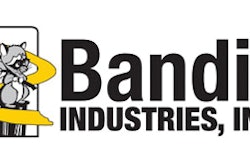
In this day and age both development and training are important to the success of a business, community, family or individual. However, it is very important to recognize the differences between the two to see success with both.
In regards to leadership, training is the teaching of tasks and things whereas development is the encouragement and leading of people to do what they were created to do. For example, you can train an employee how to process a credit card, but you have to develop the employee to understand the sales process, the customer and ultimately the closing of the sale.
Additionally, you can train management and leadership teams to understand policies and procedures but you have to empower and develop them to make real-time decisions that benefit both the customer and the company.
According to Mike Myatt, who is a leadership advisor to Fortune 500 CEOs and their boards of directors, these are some clear differences between training and development:
1. Training blends to a norm – Development occurs beyond the norm.
2. Training focuses on technique/content/curriculum – Development focuses on people.
3. Training tests patience – Development tests courage.
4. Training focuses on the present – Development focuses on the future.
5. Training adheres to standards – Development focuses on maximizing potential.
6. Training is transactional – Development is transformational.
7. Training focuses on maintenance – Development focuses on growth.
8. Training focuses on the role – Development focuses on the person.
9. Training indoctrinates – Development educates.
10. Training maintains status quo – Development catalyzes innovation.
11. Training stifles culture – Development enriches culture.
12. Training encourages compliance – Development emphasizes performance.
13. Training focuses on efficiency – Development focuses on effectiveness.
14. Training focuses on problems -- Development focuses on solutions.
15. Training focuses on reporting lines – Development expands influence.
16. Training places people in a box – Development frees them from the box.
17. Training is mechanical – Development is intellectual.
18. Training focuses on the knowns – Development explores the unknowns.
19. Training places people in a comfort zone – Development moves people beyond their comfort zones.
20. Training is finite – Development is infinite.
It’s been my experience through numerous leadership-training events, workshops, and visits with consultants over the years that Mr. Myatt’s assessment is spot on. Developing people, especially leaders, takes time and is best done over time versus a one-meeting-and-done scenario. Developing people takes a mentorship approach where the mentor takes significant interest in seeing the protégé succeed and win.
Read Part 2 of the Leadership Development series: Attributes of Great Leaders.





















